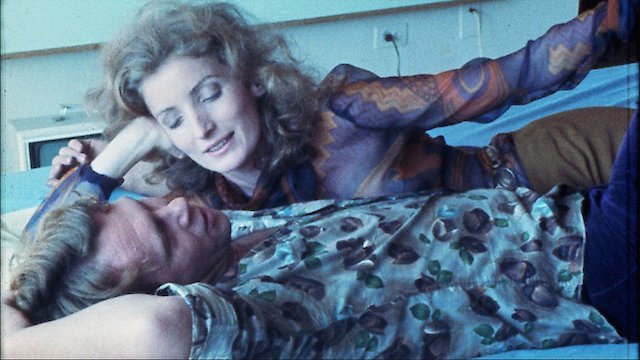
Blue Movie
Where to Watch Blue Movie

Blue Movie is a notable film from the early 1970s that marks a significant moment in the evolution of adult cinema and the portrayal of sexuality in mainstream media. Directed by the controversial filmmaker, this movie gained attention not only for its explicit content but also for its artistic ambitions and exploration of human relationships. Featuring the performances of Viva and Louis Waldon, the film serves as a fascinating reflection on the cultural zeitgeist of its time.
Set against a backdrop of unrestrained sexual liberation, Blue Movie chronicles the experiences of its two lead characters as they navigate complex emotional and physical landscapes. The film opens in a visually striking manner, immediately engaging the viewer with its bold imagery and unconventional storytelling. The cinematography takes on an almost dreamlike quality, utilizing natural light and spontaneous camerawork that lends an air of authenticity to the scenes. This aesthetic choice mirrors the film's themes of intimacy and vulnerability, enhancing the viewer's connection to the characters' journeys.
Viva, an actress and artist known for her eclectic style and boundary-pushing performances, brings a magnetic energy to her role. Her character embodies the spirit of the era—emboldened, liberated, and fiercely independent. She is not merely a passive participant in her relationships; instead, she actively seeks out experiences that challenge her perceptions of love and desire. Her interactions with Waldon's character provide insight into the nuanced complexities of romantic entanglements in a world where traditional norms are being questioned and reshaped.
Louis Waldon, a charismatic figure of the 1960s and 70s counterculture, complements Viva's dynamism with a more introspective portrayal. His character navigates the intricacies of his own desires, often wrestling with the expectations placed upon him by society and himself. Through their exchanges, the film delves into themes of connection, longing, and the search for genuine human relationships amidst a backdrop of fleeting encounters and superficiality.
The narrative structure of Blue Movie is notable for its non-linear approach, allowing for a more immersive experience as viewers are invited to explore the characters' thoughts and feelings more intimately. This layout reflects the sometimes chaotic and unpredictable nature of life and relationships, mirroring the tumultuous era in which the film was created. Rather than adhering to a traditional plot arc, the film embraces a series of vignettes that capture moments of passion, reflection, and self-discovery, painting a broader picture of the human experience.
One of the film's defining characteristics is its candid portrayal of sexuality. Blue Movie does not shy away from explicit scenes, but it contextualizes these moments within the larger narrative of intimacy and connection. Unlike many adult films of the time, which often focused solely on physicality, Blue Movie seeks to elevate the discourse surrounding sex, exploring it as a vital aspect of human relationships rather than a mere spectacle. The sex scenes are interwoven with emotional revelations, creating a framework that encourages reflection on the significance of both physical and emotional connections.
The film's soundtrack, an eclectic mix of contemporary music, also plays a critical role in shaping its atmosphere. The carefully curated selection of songs enhances the emotional resonance of the characters' experiences and lends a nostalgic charm that underscores the film's themes. The music acts as a silent character in its own right, guiding the audience through the highs and lows of the protagonists' journey.
In addition to its artistic and emotional dimensions, Blue Movie serves as a cultural artifact that captures a pivotal moment in history. Released during a time of significant social upheaval, it reflects the burgeoning sexual revolution, feminism, and the quest for personal freedom. The film can be seen as part of a broader movement that challenged societal norms, inviting audiences to reconsider their perspectives on sex, love, and relationships.
Overall, Blue Movie stands as a noteworthy contribution to the landscape of cinema, particularly in the 1970s independent film movement. Its blend of art, narrative complexity, and bold exploration of sexuality sets it apart from mainstream adult films of the time, inviting viewers to engage with the material on a deeper level. With powerful performances from Viva and Louis Waldon, a thought-provoking narrative, and a striking visual aesthetic, Blue Movie remains a significant work that continues to resonate with audiences, inviting discussions about love, intimacy, and the complexities of human relationships in an ever-evolving cultural landscape.
Blue Movie is a Drama, Romance movie released in 1969. It has a runtime of 140 min. Critics and viewers have rated it moderate reviews, with an IMDb score of 5.1..
